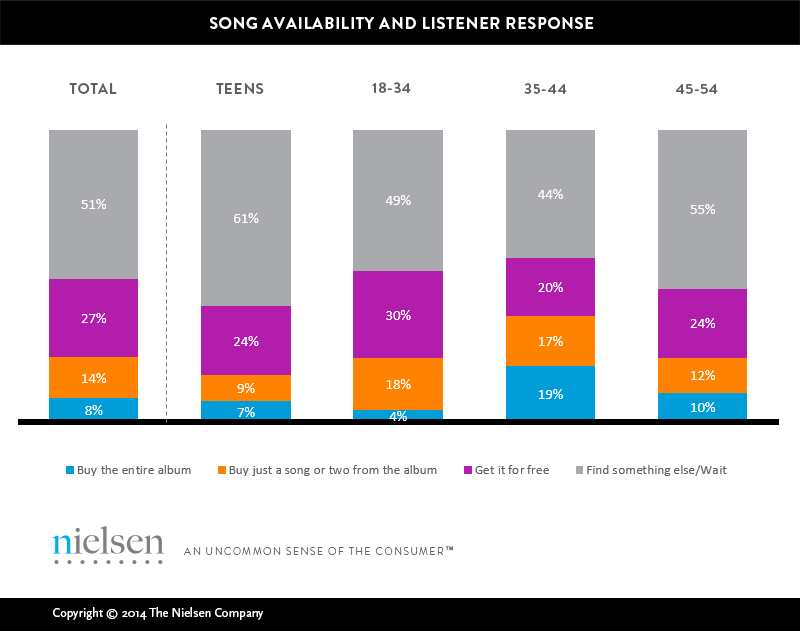Taylor Swift is making big waves this week. Not only did she sell nearly 1.3 million copies of her album “1989” in its debut week—an impressive statistic considering no other album released this year has sold more than a million—but her entire catalog, save one song, was removed from the streaming service Spotify.
Swift joins a number of artists who are critical of the free-streaming business model, though she is one of only a few powerhouses with the weight and influence to take action in such an impactful—and newsworthy—way. Many noteworthy hold-outs, including Pink Floyd, Led Zeppelin and Garth Brooks, ultimately made their music available to stream, and many more employ a “windowing” strategy. In other words, they withhold a new release from streaming services for the first several weeks in an effort to boost sales. But with 79% of the U.S. population now listening to music online, what’s the impact on fans of not having music available for streaming? Specifically, what do consumers do when they can’t find their favorite artists’ music on an on-demand streaming platform?
The answer varies depending on the kind of music consumer and their spending preferences. For example, those who spend the most money on digital music are, unsurprisingly, the most likely to purchase music unavailable to stream. Similarly, those who pay for streaming services are also more likely to buy the album (14%) than free-streamers (6%), who are far more likely to find a way to get the music for free elsewhere. On the whole, fans willing to purchase music missing from online services are more likely to buy just one or two songs from the album rather than the entire track list.
In general, listeners expect newly released music to appear on a streaming site within two weeks or less. Teens have the lowest tolerance for long waits, with 60% expecting newly released music to be available within a week. They are the least likely to buy music that they can’t stream, preferring to either find something else to listen to, wait it out, or turn to free alternatives. Adults aged 18-34 will buy a song or two, but are less likely to buy the full album than the average music listener. Adults aged 35-44, on the other hand, are the most likely to buy music they can’t stream, with 19% saying they would buy the complete album.
So who gets the flack when the music isn’t available? Fan frustration is most often directed at the service rather than the artist. Still, consumers overall are mostly understanding and show a level of patience toward both artists and services when their favorite artists’ songs are not available. Seventy-two percent of music listeners say that they have never run into the problem of not being able to find the music they want on their streaming service. A popular artist like Taylor Swift missing from a streaming service might change that sentiment.

Methodology
The Nielsen Music 360 U.S. Study is a comprehensive, in-depth study of consumer interaction with music in the U.S. Data for the Nielsen Music 360 U.S. study was collected in August and September of 2014 among 2,581 representative consumers ages 13+. The survey was conducted in English and, where applicable, represents English-speaking Hispanics. Surveys were conducted online. Data was weighted to the U.S. census population based on age, gender, race, education and household size.




